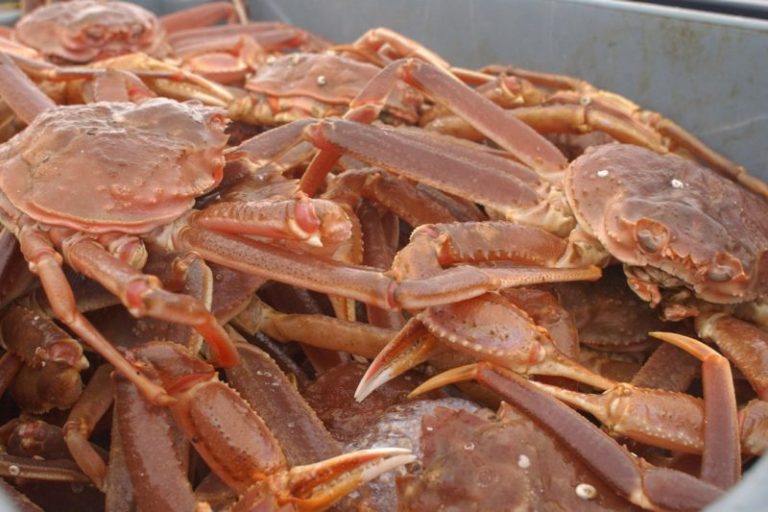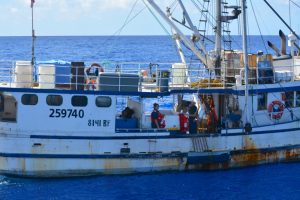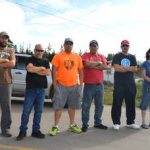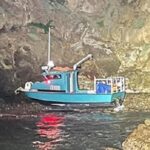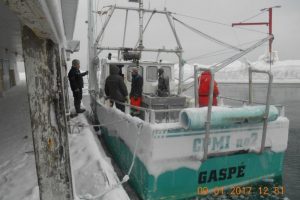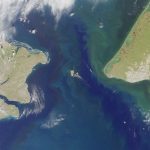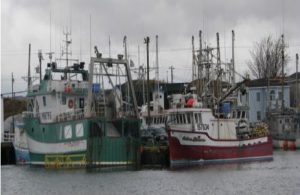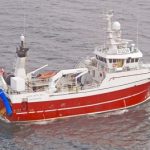Tag Archives: lobster gear

Entanglement blame game good for wallets, not for whales
In response to the dissemination of “misleading and false information” about the Maine lobster fishery and their interaction with right whales, not even the federal government (NOAA/NMFS) attributes a right whale death to the Maine fishery. In fact, only two whales have ever been seen in Maine lobster gear and the last one was 18 years ago. A red marker found on gear in 2012 could have come from anywhere in New England. Maine lobstermen voluntarily changed their marker color to purple in 2020 to clearly differentiate themselves from the other New England states and to avoid any further allegations. Deaths and serious injuries in Maine lobster gear have remained constant at zero since right whale observations were initiated. To improve on that is impossible. >click to continue reading<, By Jack Merrill 15:35

Delay Implementation of Gear Marking & Modification in Right Whale Rule
In a letter today to Secretary of Commerce Gina Raimondo, Governor Janet Mills urged swift action by NOAA Fisheries to reduce the unnecessary economic harm to Maine fishermen that the recently announced Federal whale protection rule will cause. “I don’t believe this rule, as written, should take effect at all, and, at the very least, I urge you to direct NOAA Fisheries to delay the rule’s implementation of gear marking and gear modifications (including both trawling up and insertion of weak points) to July 1, 2022,” wrote Governor Mills. “It is entirely unfair that Maine lobstermen continue to be the primary target of burdensome regulations, despite the many effective mitigation measures they have taken and despite the data showing that ship strikes and Canadian fishing gear continue to pose significant risk to right whales,” >click to read< 14:38
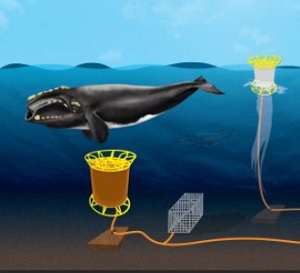
Ropeless Fishing Shows Promise, But There’s a Catch: Financial, Safety, Technology Challenges
On a cold January morning, a lobster trap sitting on a table at a manufacturing facility in Wareham is rhythmically beeping. Two final beeps have a special meaning. “So that’s the release confirmation,” explained Rob Morris, who sells acoustic release systems for the underwater technology company EdgeTech. These “ropeless” systems do away with the high number of vertical lines that run from buoys on the surface down to traps on the ocean floor. Looking at this table, Morris sees the future of the fishery, and many conservationists share that hope. Ropeless fishing eliminates vertical lines in the water column that are blamed for around half of all reported North Atlantic right whale deaths. >click to read< 10:22
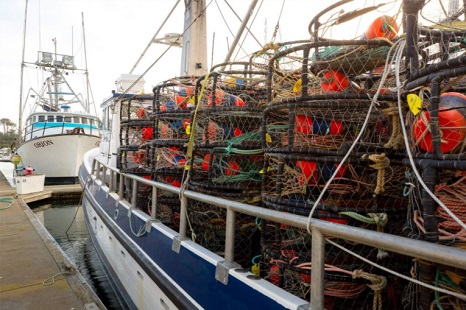
Ropeless fishing gear won’t save whales
If you live in one of California’s historic fishing communities like Bodega Bay, (or Coastal New England) you’ve probably heard the term “ropeless” crab fishing gear. That’s the new buzzword for equipment being promoted by environmental groups to solve the perceived problem of whale interactions with fishing gear. These groups have convinced the California Department of Fish and Wildlife to adopt onerous new regulations that will force crab fishermen to adopt expensive, impractical and unproven fishing gear that will put most of us out of business. The truth, however, is something different. How do we know this? Both the East Coast lobster fishery and the West Coast Dungeness crab fishery, each of which are made up of thousands of independent fishermen, have tested the pop-up ropeless gear and found it to be faulty. >click to read< 09:54
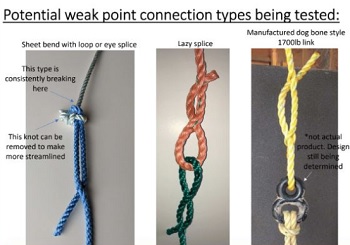
Recommended gear rules for Right Whale safety are adopted
With the National Oceanic Administration’s National Marine Fisheries Service (NMFS) under a fast approaching, court-imposed deadline to develop new whale protection rules, the Zone C Lobster Management Council held a special meeting last week to get an update on the situation from Department of Marine Resources Commissioner Patrick Keliher. The meeting was also an opportunity to consider a zone-specific plan for gear modifications that will likely be required by NMFS. As with many things occurring during the ongoing coronavirus pandemic, the meeting took place in cyberspace. >click to read< 14:43
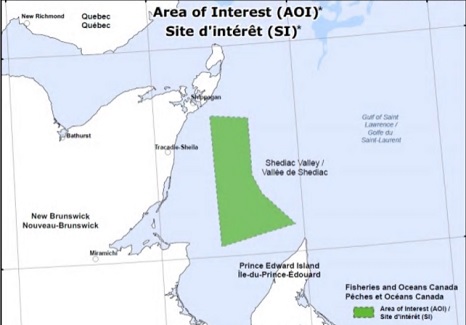
P.E.I. Fishermen’s Association want answers about new whale restrictions
Among the new rules, Transport Canada has identified a sensitive area off western P.E.I. that it’s calling the Shediac Valley. Boats won’t be allowed in unless absolutely necessary, but exact boundaries have not yet been set. “The coordinates won’t actually be set until after the whales arrive,” said Melanie Giffin, marine biologist for the association. “So we don’t actually know the location of that box until the whales are here and aggregating. So there’s still some confusion around that.” >click to read< 11:48
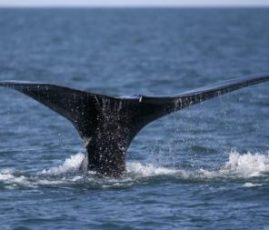
Scoping Hearing on Lobster/Gear Right Whale Entanglements
On Tuesday night there will be a scoping meeting from 6-8 PM at Mass Maritime Academy to receive public input on ways to alter the American lobster fishery regulations to reduce mortality of North Atlantic right whales by 60%. This is a followup to the August 21, 2019 NOAA Fisheries GARFO (Greater Atlantic Regional Fisheries Office) public meeting in Bourne that sought input on the recommendations from the Atlantic Large Whale Take Reduction Team,, >click to read< 20:29
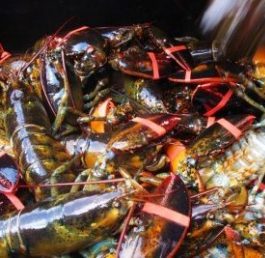
Lobster industry split over whale protection plan called Maine’s ‘line in the sand’
Some fishermen at the South Portland meeting cheered the plan. One gave Keliher a standing ovation, saying the new proposal was much better for the lobster fleet than the task force plan rolled out in August that called for 50 percent fewer buoy lines. But fishermen in Ellsworth and Waldoboro, the site of the first two meetings this week, urged Keliher to resist federal pressure to make concessions that would hurt lobster fishermen when they pose no real threat to the whale.,, “Grow a backbone,” one lobstermen told Keliher. “Don’t give them anything now.” >click to read< 07:47
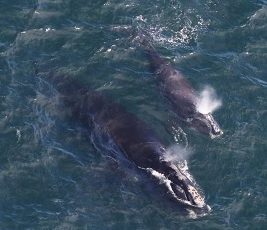
Our View: Lobster gear changes not yet warranted
A plan to drastically reduce the amount of fishing line in the waters off Maine has lobstermen up and down the coast worried about their future. It is pitting small inshore operators against those who haul in deeper waters. And there’s little evidence it will work. The plan is part of an effort by federal regulators to save the North Atlantic right whale,,,, The National Marine Fisheries Service estimates that fishing rope kills or seriously injures five to nine right whales a year,,, But none of the deaths has been tied conclusively to Maine lobster gear. >click to read<09:20

Keliher gives fishermen homework on whale rules
“Feel free to yell at me,” Patrick Keliher, commissioner of the Maine Department of Marine Resources (DMR), told a packed gym at the Trenton Elementary School Tuesday. “But it’s the federal government that’s driving the bus here.” Keliher was in Trenton for the first in a series of meetings with lobstermen up and down the coast to discuss specific ways for the lobster fishery to meet targets established in April by the Atlantic Large Whale Take Reduction Team (TRT), which works under the authority of the Marine Mammal Protection Act. >click to read<11:51
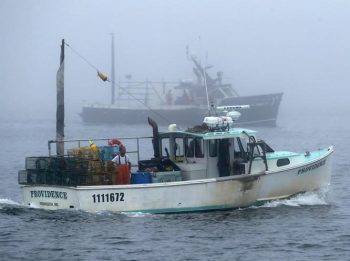
Meetings Begin On New Lobster Gear Rules To Protect Right Whales
Maine lobstermen will meet with state marine resources officials in Trenton Tuesday evening to consider coming regulations that could force the industry to reduce by half the amount of fixed-gear trap rope placed in the ocean.,, Kristan Porter, president of the Maine Lobstermen’s Association, says it’s a difficult but attainable goal, whether through reducing actual per-boat trap numbers or by sinking more traps per line in the water.,,, Tonight’s meeting of the Lobster Zone B Council starts at 6 p.m. at the Trenton Elementary School. The Department of Marine Resources has scheduled such meetings in each of the state’s seven lobster zones over the course of this month. >click to read<12:21
NH Seacoast fishermen await calm to check on battered gear – Hurricane Sandy
While his boat escaped the storm unscathed, Walsh said he was still concerned about his 350 traps that remained in the water. He said he moved the traps away from the rocky bottom and into deeper waters, where the bottom is sandy, to prevent damage. At $40 to $50 for a new trap, Walsh said the potential financial impact of the damage is “huge.” “You can’t insure that stuff, you know?” he said. http://www.seacoastonline.com/articles/20121031-NEWS-210310379

































